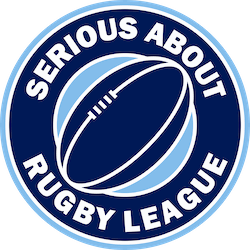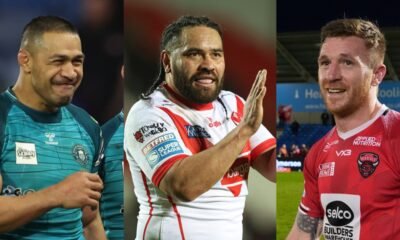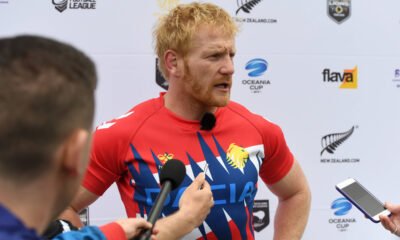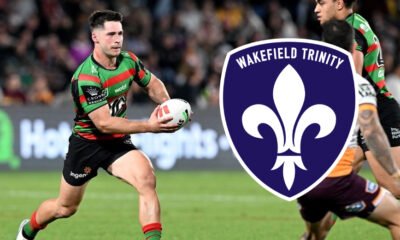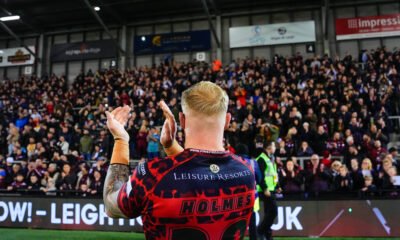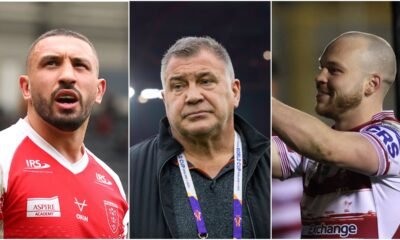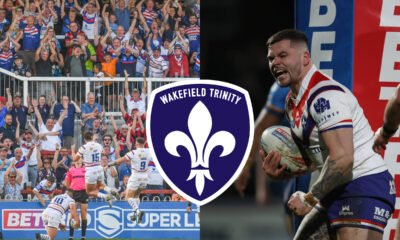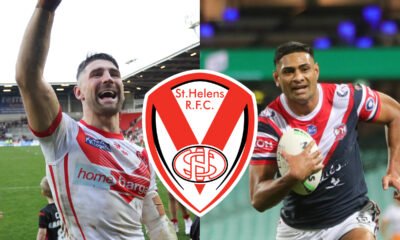
On Wednesday, the news broke that Leeds Rhinos had signed former St Helens star Kyle Eastmond after he’d spent 10 superb years in rugby union. And it got us thinking, who are the very best players to play both codes of rugby. So, here’s the top 10 cross-code players of all-time
10. Kyle Eastmond
Let’s start with the man himself. Eastmond made his rugby league debut just months after his St Helens side had won the treble. Despite the stars in that side, he still managed to make a huge impression and quickly became one of the competition’s most exciting stars. He was superb in 2009 scoring all of St Helens’ points in the Grand Final and was only denied the winning try by a mater of inches thanks to a superb Kevin Sinfield tackle. He then moved to union at the end of 2011 and lit up the sport with his explosive running. At Bath he swiftly established a superb partnership with George Ford and together the pair burst onto the England scene where Eastmond continued to impress scoring against the likes of the Barbarians and even the All Blacks. He was highly sort after in the Premiership as well playing for three of the top teams in the league including London Wasps and Leicester Tigers.
9. Mat Rogers
Rogers was a superb try scorer grabbing 75 tries in just 129 games for Cronulla Sharks as he made his name in rugby league. He went onto represent Queensland and Australia even scoring 12 points in the 2000 World Cup Final. Following this he moved to rugby union with Waratahs in 2002. He made a big impression there too playing in the union World Cup Final one year later. He did make a return to league with Gold Coast but his try scoring touch had left him a touch mustering just 7 tries per season for the Titans.
8. Jonathan Davies
Now famous for commentating on both sports for the BBC, Davies is one of the first names that springs to mind when contemplating code-breakers. He made his name in rugby union first quickly bursting onto the international scene and securing the triple crown in 1988. A year later, Widnes persuaded him to switch codes. He featured in their famous World Club Challenge success a year later and was the star in a superb Widnes team that won the likes of the John Player as the 90s begun. This coincided with his emergence on the international scene. Eventually he’d move to Warrington in 1993 and won the Man of Steel. He would reach one more high in 1994 playing in the Ashes before bouncing between codes as his career ended.
7. Israel Folau
We were blessed to see Folau in Super League last season. He proved to be every bit the player he was during his time in the NRL and seemingly unstoppable at centre. His name was made at Melbourne Storm debuting at 17. The Storm’s youngest scorer at the time won the 2007 NRL Grand Final and quickly became the youngest player to represent Australia a record only broken 7 years later. The 2008 Dally M centre of the year in 2008 then played in the World Cup for Australia before spending time playing Aussie Rules. After three years outside of rugby completely, he bounced to the 15-man code. He impressed at Waratahs and in 2013 he made his international debut. His 32 tries in 62 appearances at international level leaves him as Australia’s fourth highest try scorer in rugby union history.
6. Iestyn Harris
Harris made rugby league history when he joined Leeds for a record fee. He soon skippered the Rhinos as they played in the inaugural Grand Final and won the 1999 Challenge Cup. He was also named at the 1998 Man of Steel. Having starred for Great Britain, he captained Wales to the World Cup semi-finals before moving onto rugby union. He played for Cardiff Blues and impressed enough to force his way into the 2003 World Cup side. A year later he returned to Super League with a controversial move to Bradford. In 2005 he helped Bradford to the Super League crown before he skippered them to World Club Challenge success in 2006.
5. Lote Tuqiri
The Fiji born star was instantly superb in the NRL earning caps for both Fiji and Australia at international level. He clearly made an impression moving to Waratahs in 2003. He joined Mat Rogers in the 2003 World Cup but persisted onto the 2007 World Cup as well. After that he had a stint in England with Leicester and impressed there for two seasons. Then he returned to the NRL wowing at Wests Tigers. In 2010, he became the first code-crosser to play international rugby for Australia either side of playing union. He made a small rugby union cameo at Leinster – one of Europe’s most dominant union sides. However, he finished his career playing league even winning the 2014 NRL title.
4. Sam Burgess
Speaking of the 2014 NRL Grand Final, the man at the heart of that victory had to be on this list. Burgess was perhaps the world’s best forwards whilst at South Sydney. He became a mainstay in the England team including in the 2013 World Cup and was of course the Man of the Match as Souths became champions. That was in spite of a broken cheek bone. Then he moved to rugby union and Bath. He was expected to make a splash for England in the 2015 World Cup. His performances for England were criminally underrated and any foot he did put wrong was amplified ten-hold. He still showed his quality whilst playing in the 15-man game before continuing to impress in the NRL following his return to Souths.
3. Jason Robinson
Try scorer of the sublime winner in the 1998 Super League Grand Final, Robinson was undoubtedly a rugby league legend. That night also saw him claim the Harry Sunderland Award which capped off a superb stint at Wigan as he featured in their most dominant side in the 90s. The Great Britain star played in multiple Challenge Cup Finals and even Wigan’s famous World Club Challenge triumph in 1994. In 2000 he switched codes and helped England win the 2003 World Cup scoring a try in the final. The first man to win both Super League and the Rugby Premiership – which he did so with Sale – also played for the touring British and Irish Lions.
2. Sonny Bill Williams
Few men have become as synonymous with switching codes as Sonny Bill. In his first full season, he caught the eye helping Canterbury to the 2004 NRL title before making his international debut at just 18. However, just a few years into his superb rugby league career he joined French union powerhouse Toulon in 2008 before moving to Canterbury in Super Rugby. It was a move that saw him earn a place in the All Blacks 2011 World Cup winning side. In 2012 he won the Super Rugby title before winning the NRL title a year later as he returned to rugby league with Sydney Roosters in time to play in the 2013 World Cup. Not wishing to miss out on the 2015 rugby union World Cup, again he made the switch back to the 15-man code. He again claimed the world title. Then, last year, Toronto Wolfpack pulled off a major coup bringing him to Super League. However, Toronto’s plight meant his Super League career didn’t last.
1. Dally Messenger
The definitive code-crosser rocked the rugby world when he switched codes to rugby league in 1908. Having already represented Australia in rugby union, he looked to test himself in league. It was a move with massive fallout with his records for New South Wales Rugby Union only restored in recent years. His class is epitomised in the Dally M medal – the top individual award in Australian rugby league – which is named after him. He was named on the wing in New South Wales all-time team and only in 2011 was his record of 32 points in one game for the Blues matched. A special player, with a special legacy, he has to be considered the greatest code-crosser in rugby history.
